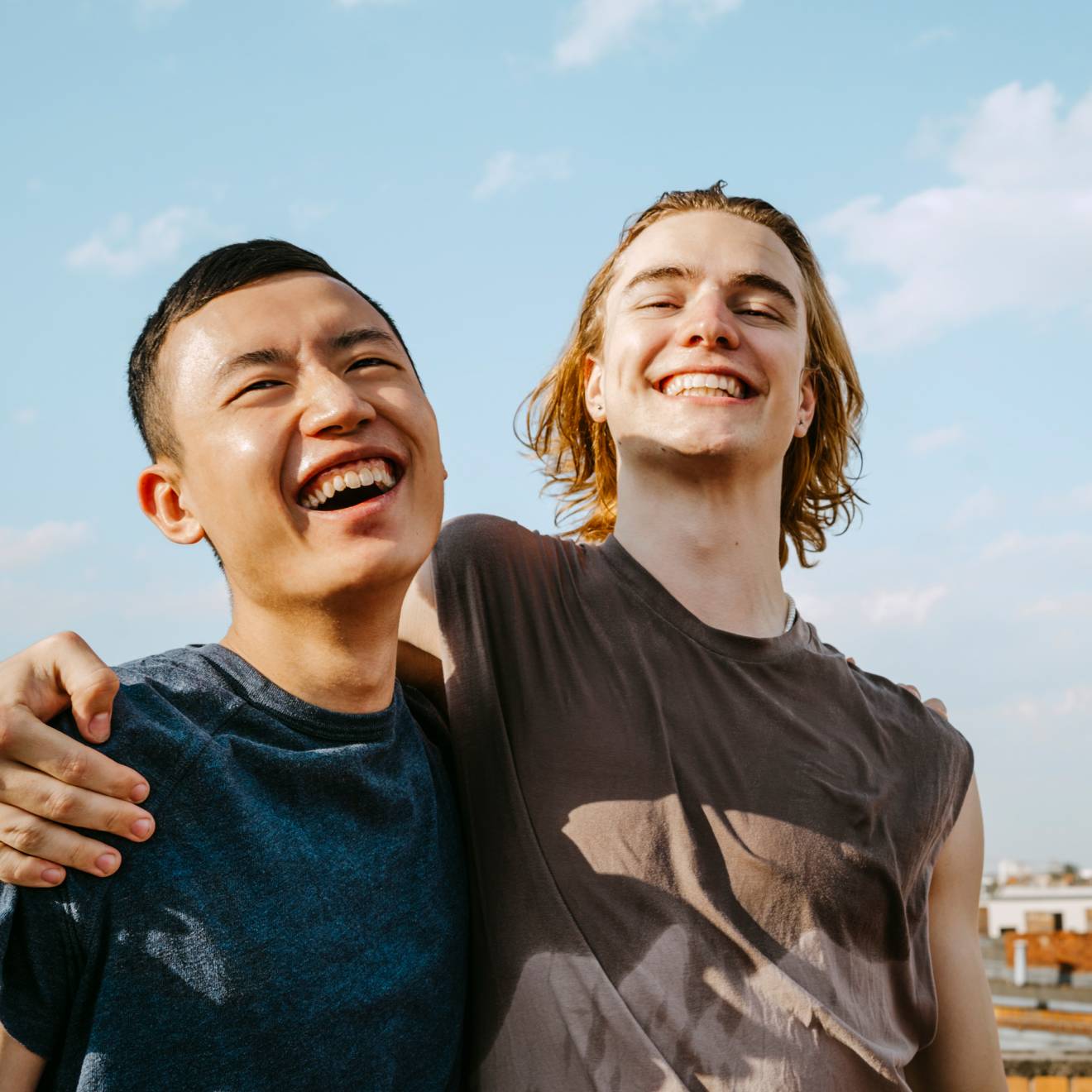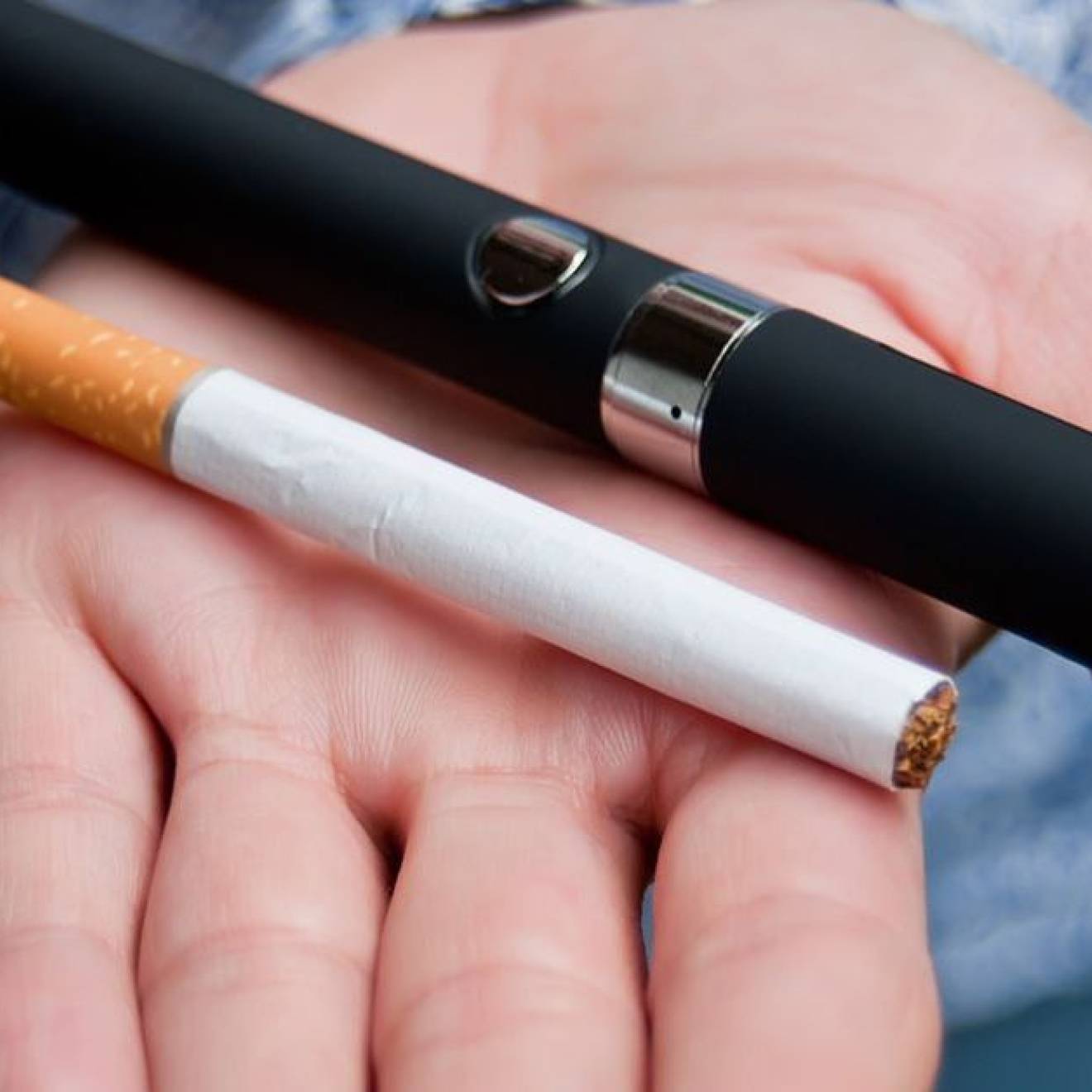Michelle Brubaker, UC San Diego
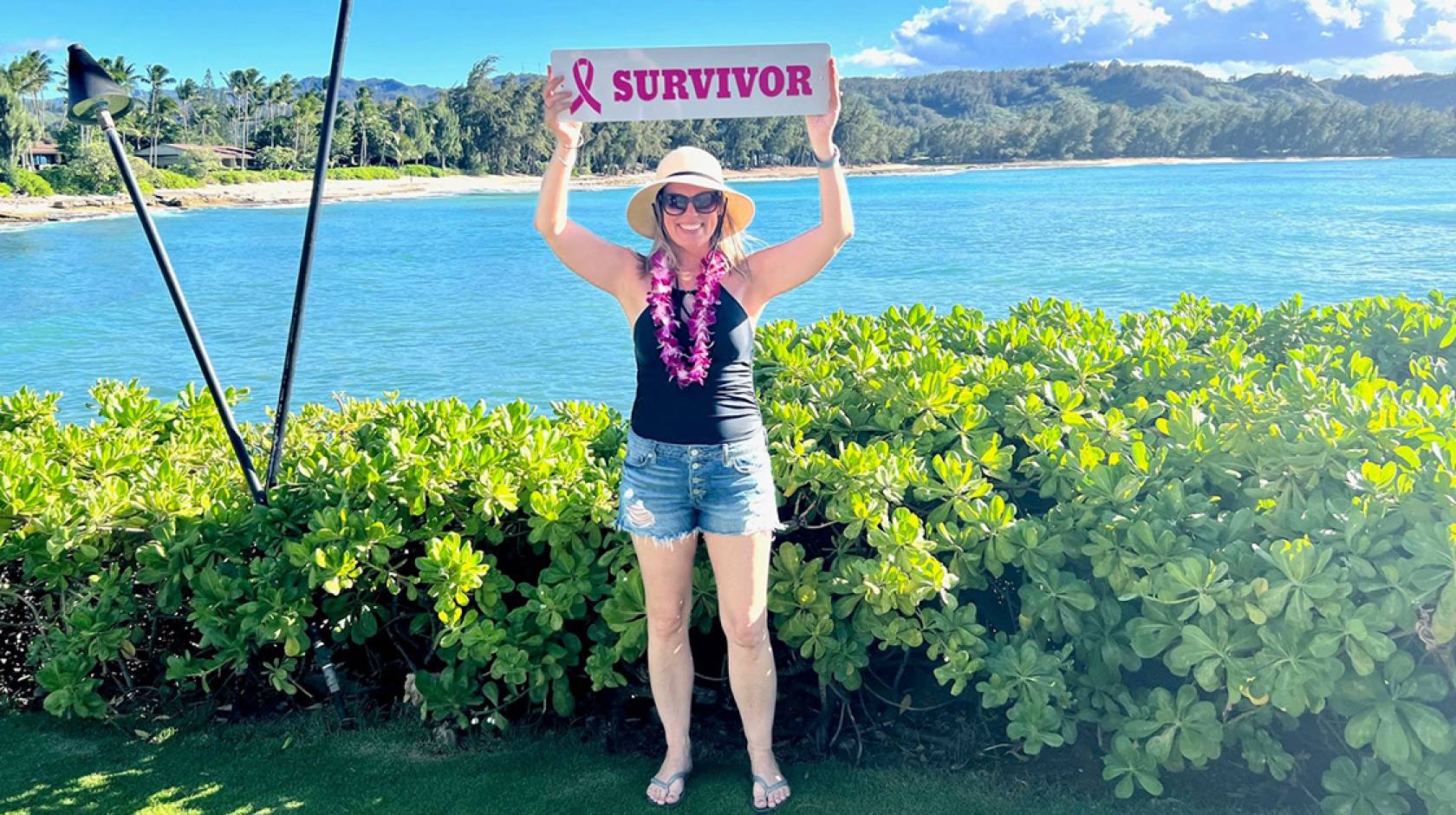
When I first arrived at the fabulous Hawaiian location for our family vacation, I was overwhelmed with happiness and joy. Aside from the obvious reasons — being on a much-needed trip and unplugging from everything — I was feeling deep gratitude to be alive.
I had been planning this trip for five years. It was the bright light at the end of a dark, long tunnel, called breast cancer treatment.
In 2017, I sat in a doctor’s office with a radiology technician asking me if I had a loved one in the waiting room. My heart sank, but my gut knew something was not right the second I felt an enlarged lymph node in my armpit a few weeks prior. I was my own health advocate and made an appointment. My intuition was shouting, and I was listening.
I was diagnosed with an aggressive Stage 2B breast cancer that had spread to my lymph nodes. I was age 39 with two young sons. My husband and I sat in that room together trying to take in the surreal news. It was also Valentine’s Day — our least romantic one to date.
My entire world got turned upside down. I was young, healthy and unsuspecting of a two-centimeter tumor that had been growing deep in my breast tissue. I drove home the day of that radiology appointment overwhelmed with anxiety. I thought of my kids, wondering if I was going to see them grow up.
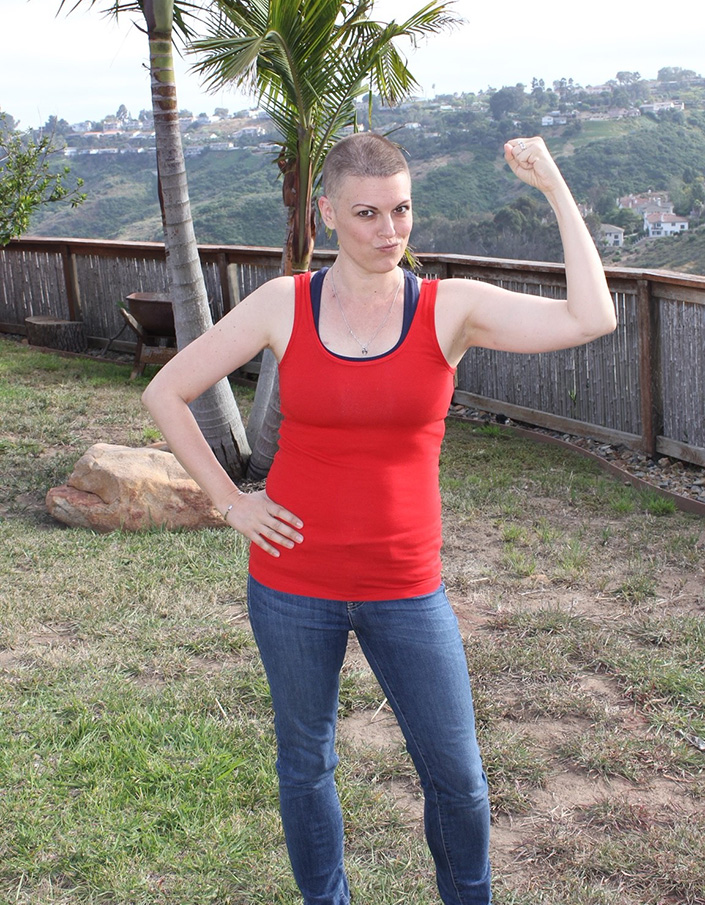
The day Michelle shaved her head before her last four sessions of chemotherapy. Her husband and two kids all joined in, each shaving a section.
One in 8 women will be diagnosed with breast cancer in her lifetime. I was the ‘one.’ I also tested positive for the BRCA 1 gene mutation. I have been described as an overachiever, but this was certainly not how I wanted to prove that adjective. The gene mutation put me at a high risk of breast and ovarian cancer. Knowing about the gene mutation is significant in order to make informed health care decisions.
The next few years were a whirlwind of appointments, treatments, surgeries, tests and scans. I felt like I was hit by a tsunami.
I had walked into Moores Cancer Center at UC San Diego Health many times before the day of my diagnosis. I work on the UC San Diego Health communications team. I had spent hours in and out of the building, gathering story ideas to help promote the extraordinary work of the health system.
On March 20, 2017, I walked in as a patient for my first day of chemotherapy. I wore pink boots and even managed a smile. I learned how strong I was that day. I transformed from worrier to warrior. I learned about true empathy as I looked around at the other cancer patients receiving chemotherapy. There is always someone facing a harder challenge.
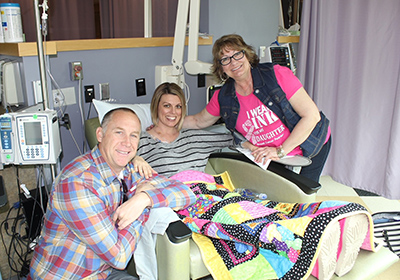
On March 20, 2017, Michelle received her first chemotherapy treatment at Moores Cancer Center at UC San Diego Health. She was surrounded by family and work colleagues who came to support her. (Left to right, John Brubaker (Michelle’s husband), Michelle and Sharon Schaefer (Michelle’s mom).
I had also walked through Jacobs Medical Center at UC San Diego Health while it was under construction. I saw it when it was just rebar and dirt. As it evolved, I walked every hallway and toured the surgical suites, learning about the state-of-the-art building and the innovative care that would be provided. Then, I found myself being wheeled down the hallway for my double mastectomy. I learned how to mourn and accept (not always in that order) parts of my body being removed.
I have experienced firsthand the most comprehensive and compassionate care by remarkable multidisciplinary teams at the Comprehensive Breast Health Center at UC San Diego Health. I had team members wipe my tears and hold my hand.
My body went to war, and I had an army of experts throughout the entire hospital system to get me through it.
After nearly two years of treatment, involving 10 chemotherapy sessions, a double mastectomy, 28 radiation sessions, a hysterectomy and breast reconstruction, there is no evidence of cancer. My husband and I learned that I was officially in remission on our wedding anniversary. It made up for Valentine’s Day.
I am now in the chapter of survivorship. I have learned that there is a new set of emotions and obstacles that come on this path. I have learned how to be in the present.
As we honor October as Breast Cancer Awareness Month, I am passionate about sharing my story to educate and provide hope and encouragement to those newly diagnosed. I have learned that these reminders can save your life:
-
Mammography is the most effective tool for screening for breast cancer
-
Examine your breasts and your armpit areas
-
Know your family cancer history
-
Talk to your doctor about genetic testing and counseling
-
Be your own health advocate
-
If the disease is detected early, the survival rate is 98 percent
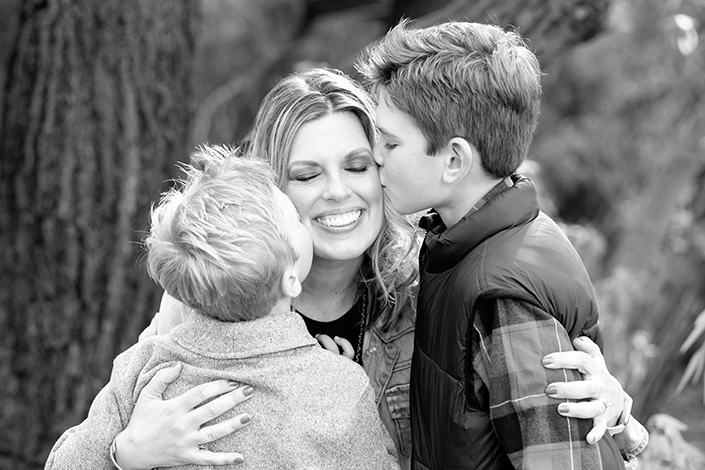
When I now walk inside UC San Diego Health’s hospitals and clinics, I can’t help but have mixed emotions and flashbacks of some of the hardest days of my life, and some of the most celebratory.
During the early days of my diagnosis, a survivor told me I would one day find the gifts from the journey. I didn’t understand at the time. In fact, I almost didn’t believe her. I have learned she was right.
My life is more vibrant. I have a bucket list to remind me that none of us are guaranteed another day.
I think of cancer every day, however, it no longer consumes me. It motivates and inspires me.
My greatest accomplishments are being a mom and a cancer survivor. Both have taught me the most valuable lessons that I infuse in all aspects of my life.
I hug my kids with an extra squeeze now, knowing I have been given the opportunity through life-saving care to watch them grow up.
I started planning our Hawaii trip to celebrate my five-year cancer free milestone while I was going through the thick of treatment.
As we swam in the warm ocean looking at sea turtles surrounding us, I took mental photos. My breast cancer journey led me to that special moment with my husband and kids. I will remember it forever.
I have never been so elated to cross something off my bucket list.
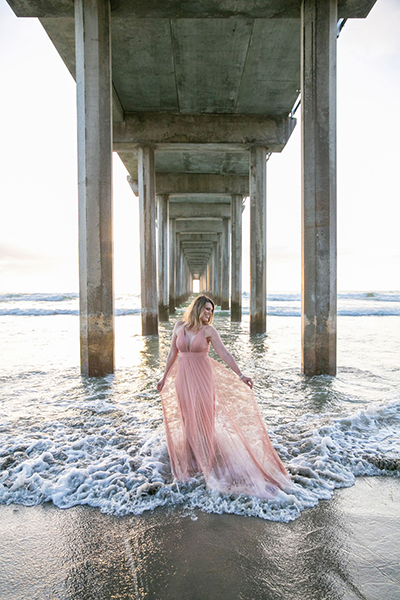
After going through nearly two years of treatment for an aggressive breast cancer treatment, Michelle is now considered in remission and has a passion for sharing her story to educate and provide hope and encouragement to newly diagnosed patients.
